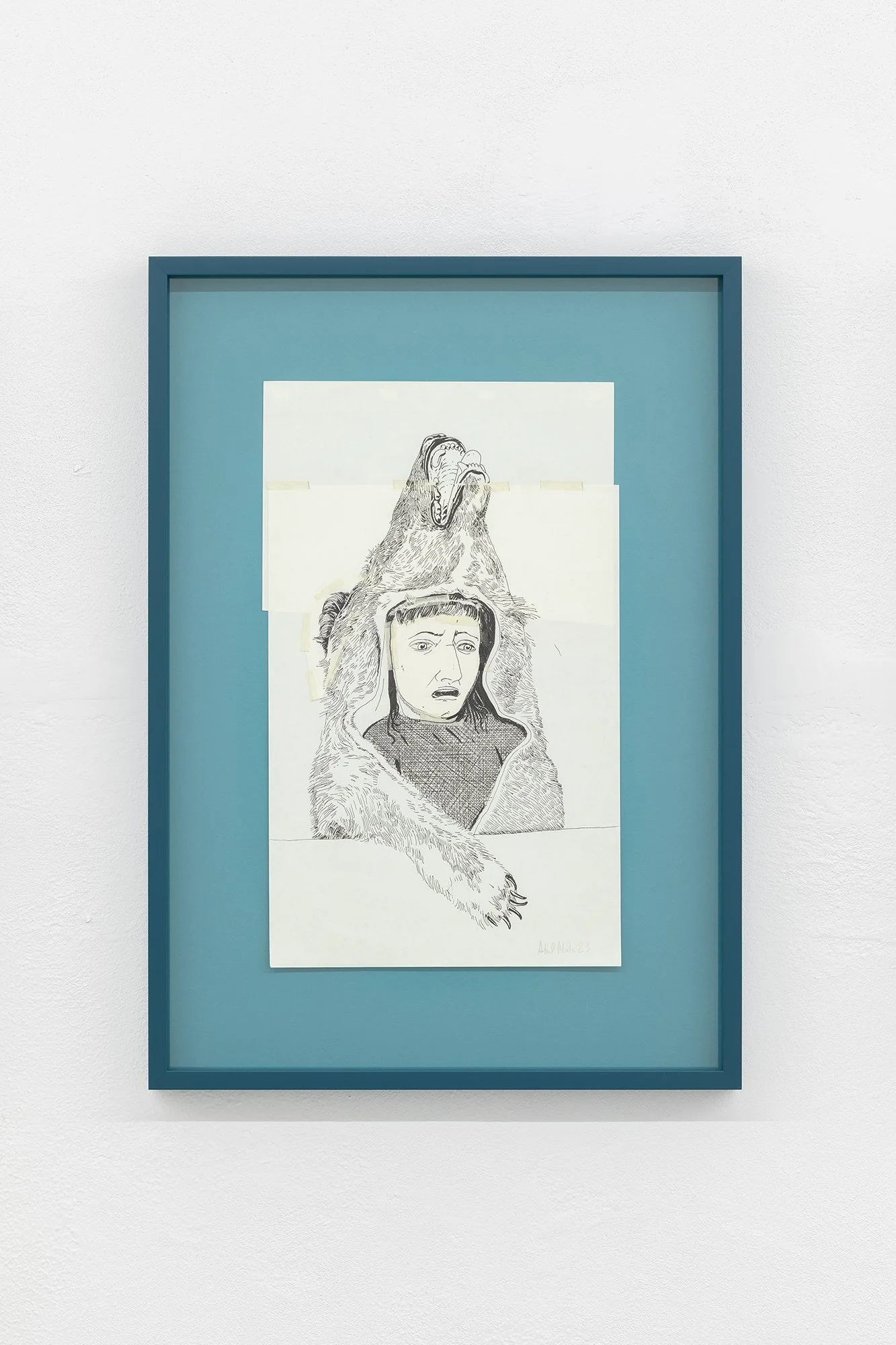12 Sep — 17 Oct 2025 @Porto
Bicho de seis cabeças, Solo Show by Abel Mota curated by Frederico Vicente
Six-Headed Creature is a non-linear sequence of drawings. Drawings that form fragmented narratives: overheard here, whispered there, blown in from elsewhere. Drawings of half-bodies, hybrid men, feathered beasts, and other sleepwalking figures. Drawings that highlight the importance of collage in the artist’s interspecies imagination.
For Abel Mota, this creature is as much from the Brazilian sertão as it speaks in mirandês, yet it remains a familiar domestic being, one that feeds on our skepticism and drinks from our hesitations. But if it’s true that “ifs” don’t make history, and that history is not built on “ifs”, popular stories may tell a different tale. If it doesn’t exist, then why does it sleep at our feet? Why do we see it flying above our heads? Why do we dress it up for pretend play? Don’t deny the existence of this little beast. Six-Headed Creature is a journey suspended in chromatic tones, filled with unfinished plots and stories still waiting to be told.*
Abel Mota (Portugal, 1999) is a visual artist living and working between Porto and Braga. He studied Painting at the Faculty of Fine Arts of the University of Porto and attended Tim Eitel’s studio at the École des Beaux-Arts in Paris. Since 2017, he has taken part in artist residencies in Cape Verde and Brazil, and has shown his work in several solo and group exhibitions both in Portugal and abroad. Notable solo exhibitions include A Whale of a Time, Fórum Arte Braga, 2025; Queridas Bestas, Galeria Plato, 2024; and group shows/art fairs such as the Encontrarte Biennial (2017–2025), Bienal de Cerveira, 2020, and Swab Barcelona, 2025. In 2021, he received the Millennium BCP Youth Art Prize and collaborated with Esporão on visual identity work. He is co-founder of the studio and cultural space O Bueiro and regularly collaborates with the design studios of Gémeo Luís and Eduardo Aires.
Abel Mota uses drawing and painting as tools to spark an almost inexhaustible curiosity. His visual research blends a wide range of references, from Iberian and South American folklore to Eastern European cinema, traditional ceramics and “borrowed” imagery from the digital everyday. His works inhabit a space that is both narrative and intimate, confronting us with subtle humour and an enigmatic emotional ambiguity. His practice builds a shared mythology, one that feels at once strange and familiar, where memory, affection and imagination intersect.
*Text by Frederico Vicente

























